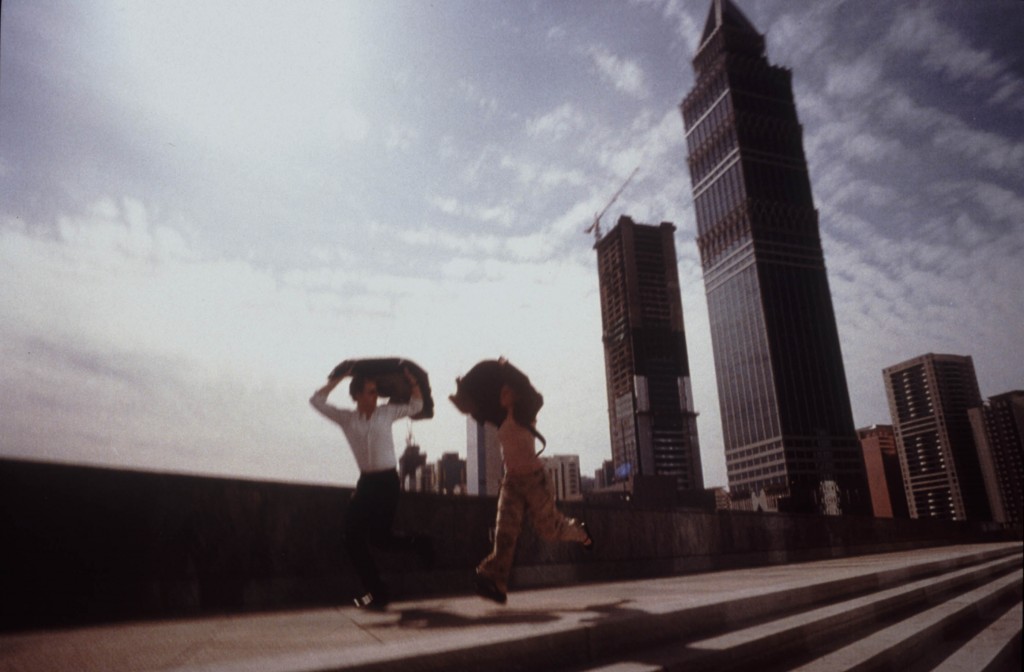Thoughts on Code 46, continued…
The “standardized future†as a concept—something which, if not yet entirely real, SF has long been reaching for—is technological in the broadest sense (see Billington via Segal: not only “machines†but “structures, those fixed buildings which form the physical foundations of society†Technological Utopianism, 12). Thus it is not a gadget Code 46 proffers but the complete vision of a world, a production design as cohesive in its way as that of Menzies’ Things to Come, not manufactured but cobbled together from existing architectures and locations. The presentation of a piecemeal future, rather than one of whole cloth, is a measure of cultural difference between the two eras in which these films were made. “‘Found’ spaces†(Code 46 Production Notes, 6) in Dubai, Shanghai, Kuala Lumpur, Hong Kong, London, and Jaipur are fused together in a
“‘creative geography’, often matching the exterior or exit of a building in one well-known city with the entrance or interior of a building in a different city. “We thought that the most interesting thing to do,†says production designer Mark Tildesley, “would be to try to fool the audience by taking the most interesting bits from each location. So you’d have the impression that you were walking out of a door in one city, but you’d actually end up walking out of it into completely different place, somewhere else entirely.â€
The net effect of this assembly is to emphasize the homogeneity and interchangeability of an aesthetic we have come to qualify as futuristic. Social critics have long bemoaned the visual monotony common to sites of commerce (malls, office parks, skyscrapers) and public transit (airports, subway cars and stations). Jacques Tati mocked the universal anonymity of modernity with a series of nearly identical travel posters in Playtime, and Ken Kalfus humanized consumer desire in an age of mass production with the playful Calvino tribute “Invisible Malls†(Thirst, 147-153). Indeed, it is almost as if one mall were all malls, one lobby led to all lobbies, and we might pass unremarked from one to another. Splicing these urban environments together construes a contiguous transcontinental urban space whose unifying trait, besides impersonality, is privilege. Producer Andrew Eaton notes the “contradictory architecture†and curious juxtapositions to be found in modern cities like Shanghai and Dubai (C46PN, 6), which came to be reflected in the film’s politics: wasteland and metropolis, poverty and modernity, Reservation and Brave New World. Although distinct, geographically disparate cities are named in the film—a Shanghai that looks like Dubai, a Seattle that looks like Hong Kong—the network of cities known as “inside†functions as a unified first world, a global high future, as if to prove that urbanity according to the theories of Rem Koolhaas were not only feasible, but in a way already here, lacking only the system the movie posits to connect them and hermetically exclude undesirable social elements. » Read the rest of this entry «
